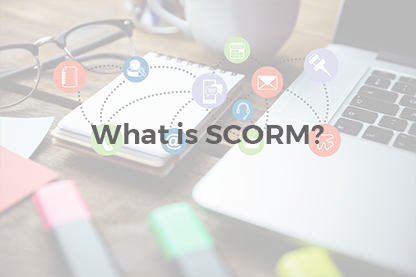ELearning courses have rapidly become an increasingly popular form of online content. The Google search term alone now pings back nearly 16 million results. However, that doesn’t mean that everything is covered. ELearning courses are designed to educate and inspire people around the world on how to complete and carry out certain tasks, whether it’s improving the SEO ranking of your website, or even cooking a 3-course meal for four people; the possibilities are endless. When it comes to your business, these courses can also be extremely popular. If you feel like your next big content project could come in the form of an eLearning course, but you don’t know where to begin, don’t worry. Here are the ten steps you can take from start to finish.
#1 - Define Your Problem
The absolute first thing you need to do is to decide on the problem or issue that your eLearning course is going to focus on. Without this fresh and clear in your mind, you won’t be able to create a comprehensive course. Ask yourself question after question until you find that perfect question that people will be asking which will ultimately lead them to your course.
#2 - Research Your Audience
“With the question clear in your mind, it’s now up to you to see who is going to be asking this question. Researching your audience is vital since it will affect every single aspect of your elearning course, including tone of voice, style, accessibility and more” – explains Christiana Allen, an eLearning consultant at Resumention. What gender are you producing your course for? What age are they and what are they looking to get out of your course are all questions you need to be asking yourself.
#3 - Using the Right Content
With the information of the above two steps in mind, you can now start thinking about what kind of content you want to be producing for your target audience and what they’ll best connect with for maximum impact. You could be providing your students with factual information, conceptual information or advice. It’s completely up to you and your topic. Here are also many tools you can use to help with this process;
My Writing Way - an online idea generation tool for sourcing content ideas. Boomessays - a tool for editing your content ideas to perfection. Essayroo - a content writing and proofreading tool to perfect your ideas. LetsGoAndLearn / Assignment help- a blog with comprehensive writing guides for creating accurate ideas. Ukwritings - a tool for sourcing headlines and descriptions for your content.
#4 - Set the Objectives
With all your basics confirmed and in mind, it’s time to start thinking about developing the course itself. The first step you need to take on how to achieve this is setting out your learning objectives. In short, these are several bullet points that will describe what your students will be learning by enrolling in your course.
#5 - Planning Your Educational Journey
With your objectives in mind, you’ll need to think about how you’re going to get your students from potentially knowing nothing about your subject to being comprehensive with it. Think about how you’re going to introduce the topic and where you’re going to go from there, all the way through to the last chapter of your course.
#6 - Storyboarding
Now that you know the route that your students will be taking, you can start planning the actual content of each step that you’re going to take. This is known as storyboarding and consists of you using text, pictures, and videos to see how best to relay your information to your students. When creating the storyboards for your course, you can also use tools to help. Services like Writing Populist will provide you with writing guides you can follow on how to format your storyboards. Other services like Academized , as recommended by the HuffingtonPost , will be able to help you with the touch-up formatting of your storyboards.
#7 - Choosing a Platform
Now that you’re nearly ready to start creating your course, you’ll want to think about the best way to provide this course to your users. Are you going to host it on an online eLearning platform? Perhaps you’re going to write your content up in an eBook format or even sell it as a downloadable package. This will need to be decided, so you know what format your content needs to be in.
#8 - Create the Course
Finally, you can start creating the course. This means writing up your text content, taking your photographs and recording your videos. If you’ve decided to use an eLearning platform, this can be done using the step by step instructions that the platform provides. If you’re making it yourself, simply start at the beginning and make your way through your content. When you’ve finished, be sure to go through it several times to makes sure everything makes sense, and there are no errors in your content.
#9 - Publish the Course
When you’re happy with your content, upload it to the Internet!
#10 - Promoting the Course
This is where your research comes into play. How are your users going to find your course? Are they going to click through to you through your website, or through your social media accounts? Perhaps you’re publishing and promoting on your eLearning platform. Think about the best way to connect with your target market. If you’re planning on writing promotional marketing content, such as blog posts and articles, you can use copywriting tools like Paper Fellows and Australianhelp to assist you with this process.
Summary
And that’s everything you need to know on how to create an eLearning course for your business or organisation! Make sure that you’re thorough with everything you create as well as making sure that your content is of the highest quality and you can be sure that your course will be a success!
*Gloria Kopp is an elearning consultant at Oxessays . She works as a part-time business content writer and editor at Big Assignments writing service. Gloria is an author at Studydemic review blog and an expert contributor at The Tab and Template Monster.*










